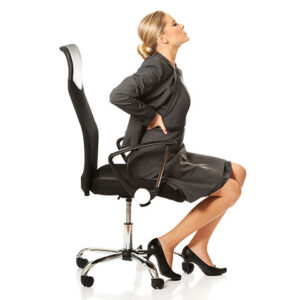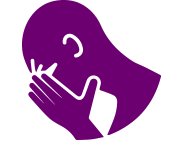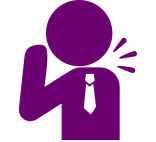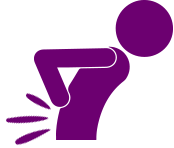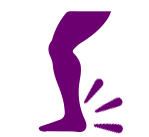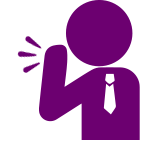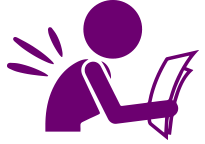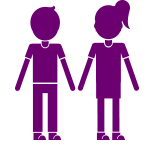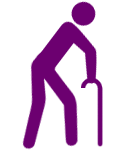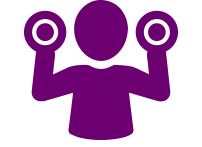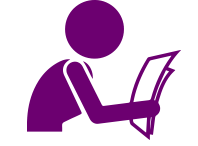No area in the body functions in isolation, this is why at Future Proof Care, we take care of the body holistically. Joints are designed to be mobile and muscles to create their movement. If the mechanics are locking up, and muscles are tight, restriction results. We help relieve those restrictions to create freedom of movement and allow the body to self heal and regulate.
Headaches
We can assess, diagnose, and effectively treat patients with headaches. Those who presented with cervicogenic, tension or migraine headaches have experienced significant relief with our care.
Neck Pain
Neck pain can originate from tight muscles, joints or even from pelvic imbalance. We help patients regain movement and reduce pain levels.
Low Back Pain
Back pain can be a niggle, a deep ache or excruciating, effecting your normal function. By restoring the mechanics, life can become functional again.
Hip Pain
Hip pain can come from the hip itself, muscular tension or lower back. If you find yourself limping, difficulty getting comfortable or transitioning from sit to stand, let us help you.
Knee Pain
Knee pain can be from the joint, the structures in between or the muscles pulling. It can also be due to mechanical imbalance in the hip/ankle/low back. We find and treat the cause to allow you to get on with things.
Ankle/Foot Pain
Sprained ankles, plantarfasciitis and general pains/instability in the ankle can be quite restrictive. By getting the joints moving, function can be restored allowing you to move forward with ease.
Shoulder Pain
Shoulder pain can be because of muscle restriction, impingement of structures of overuse. Pain/dysfunction can even be coming from your neck. We help patients be able to use their shoulder with ease and reach for greater things.
Elbow Pain
Elbow pain can be from the joint restricting, the muscles pulling (tennis/golfers elbow) or referral from your neck. We assess, diagnose and treat your presentation to allow you to use your arm without fear/pain.
Wrist/Hand Pain
Wrist/hand pain can be from a repetitive strain, a fall, sleeping with hand bent or computer use or it can be coming from your neck. By restoring the movement in the joints and muscles, you can regain your grip strength, we can get you back to function.
Upper Back Pain
Upper back pain can be caused by posture/mechanics (joints not moving properly), wear and tear, compression, sprain (ligaments), strain/tightening (muscles) inflammation of the blood vessels/nerves, fractures (bone) or from another cause.
Disc Pain/Sciatica
Disc bulges incorrectly known as ‘ slipped disc’ can cause alot of dysfunction resulting in altered posture and ability to weight bear properly. By changing the mechanics and releasing the surrounding structures, irritation can be minimised and function restored.
Children/Babies
Children and babies can benefit significantly from treatment, helping their bodies develop and respond correctly to natural stresses as they grow.
Ageing
As the body starts to slow down, the joints and muscles can lock up more due to wear and tear over the years. With treatment, we can help keep the body more mobile allowing the ageing body to function better withstand stresses from activity/inactivity.
Enhanced Performance
In order for people to achieve what they want and need, the mechanics of the body need to be functioning optimally. By improving the body’s motion, the body can withstand stresses better resulting in improved performance.
Posture
Proper Posture allows better shock absorbancy to withstand life’s stresses. Good posture allows the body to move better resulting in it not having to work so hard out of balance. By improving the mechanics and muscular function, proper posture can be achieved.
Becky Morrish
``WORKED WONDERS``
John Stewart
``TREATMENTS OBVIOUSLY HAVE BENEFIT``
Chidi Lynn
``MADE ME FEEL COMFORTABLE AND RELAXED``
Techniques
Our Practitioners use a corrective procedure called the adjustment which is the application of a specific force in a specific direction to the joints to correct their movement pattern. During these adjustments you may hear an audible click/pop which is the release of gas (nitric oxide) from the joint as it moves.
The techniques used by our practitioners will depend on your individual requirements such as age, size, comfort levels and presenting condition. Techniques range from manual, table assisted, instrument based and soft tissue techniques. All techniques are adapted to each individual whether for a baby, a pregnant lady, an elderly person or a burly rugby player.
No two people are identical therefore the technique diversity caters for each individual’s needs and are aimed at restoration of nervous system function to optimise the body’s potential to self heal and regulate.
One of the most commonly used techniques among our practitioners. This technique is a high velocity low amplitude force applied to individual joints in a specific direction to restore function. Patients usually feel more comfortable and relaxation of the structures post adjustment.
This technique was developed by Dr Clay Thompson in 1957 and uses drop pieces on the benches to correct joint misalignments. During this technique, segments of the table elevate and drop away gently when specific contact is placed to fixated joint /pelvis to enhance their movement.
This technique was founded by Dr Major DeJearnette. It identifies patterns of distortion in the cranium, spine, organs and pelvis in an organised and practical way to restore the flow of Cerebro Spinal Fluid (CSF) through the central nervous system. Wedge shaped blocks are used during this technique to correct pelvic imbalances with patients own body weight.
This technique uses an adaptable spring loaded instrument to apply a consistent low force, high speed adjustment to specific tissues/joints instead of the manual techniques. The activator method is suitable for all types of patient from babies, those with osteoporosis to the larger patient.
Developed by Dr George Goodheart, this technique uses muscle testing as a primary feedback mechanism to examine the body’s function. If muscle weakness is found, either individual or a combination of the above techniques are applied to restore the nervous systems function to that area.
NMT and OSM usually consists of alternating levels of concentrated pressure on areas of muscle tightness. The pressure is usually applied with the fingers, knuckles, or elbow and can feel painful at first but most people describe the pressure as “good pain”. Techniques such as Muscular Energy Technique, Trigger Point Therapy and Soft Tissue Release dominate this treatment with fantastic functional results.
Muscle Energy Techniques are used to treat somatic dysfunction, especially decreased range of motion, muscular hypertonicity, and pain. When dysfunction occurs at one joint or segment, the related agonist muscles become affected. If uncorrected, the antagonistic muscles eventually become involved leading to dysfunction of both muscle groups. This presents as decreased range of motion with pain and/or tenderness in the area. It is a direct and active technique engaging the restrictive barrier and requires the patient’s participation for maximal effect.
Soft Tissue Release is an advanced massage technique which stretches soft tissues structures such as muscles, fascia, and tendons. By targeting specific areas of tension with manual pressure and stretching that muscle in a specific direction, the fibres release increasing the range of movement, relieving pain, preventing, repairing and managing injuries. STR restores soft tissue balance, realigns muscle fibres, breaks down adhesions and significantly increases motion.
Trigger points are palpable nodules in taut bands of muscle fibers. Pain frequently radiates from these points to broader areas, sometimes distant from the trigger point itself. When trigger points are present in muscles there is often pain and weakness in the associated structures. Activation of trigger points may be caused by a number of factors, including acute or chronic muscle overload, psychological distress, trauma, radiculopathies, or infections. Treatment involves direct pressure release, stretching, MET and STR.
Cranial work by a trained practitioner of craniopathy can produce significant changes in the cranial and facial bones. A wide variety of symptomatology affecting the patient’s overall health can be relieved when the appropriate cranial work is employed. Cranial work is performed by hand contacts on the skull and some corrections are made intra-orally to facilitate optimum cranial motion and flow of fluid around the brain.
Balance Ligamentous Tension is a very gentle Osteopathic technique invented by A.T. Still and further developed by Rebecca Lippincott and William Garner Sutherland which is used to release tension and realign the ligaments and soft tissues of the body to improve joint function and blood flow. The ligaments provide proprioceptive information that guides the muscle response for positioning the joint, and the ligaments themselves guide the motion of the articular components. This technique can be received by patients of all ages.
Dry needling, also known as myofascial trigger point needling, is based on the traditional and western medical acupuncture. Using hypodermic needles during treatment, as Research supports, can improve pain control, blood flow and reduce muscle tension and facilitates an accelerated return to active rehabilitation. Dry needling can also help with multiple contraction knots, which are related to the production and maintenance of the pain cycle.
General Osteopathic Technique is a mobilisation technique which treats the whole body to improve blood flow, lympathic drainage and proprioception resulting in better range of motion of the joints, bringing them back to normal range.


